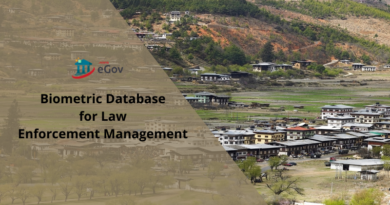Saudi Arabia Adopts Software Solutions for Secure Border Control Management
How do you keep track of who is coming in and out of your country when you are a popular travel destination? With a secure Border Control Management System, of course!
The Kingdom of Saudi Arabia is home to a surprisingly diversified resident population, in addition to managing large influxes of travelers from all over the world. With more than 41 million people visiting the King Abdul Aziz International Airport in 2018, Jeddah saw a 20% increase in travelers compared to 2017. Throughout the year, the airport handled 3,40,333 flights. These figures are expected to rise in the coming years as Saudi Arabia implements economic reforms and pilgrims visit holy sites.
Authorities in Saudi Arabia were highly concerned about the security challenges faced by authorities while verifying traveler identity. The time it takes to verify passengers’ identities, check bags, and print boarding passes is one of the main reasons for boarding delays. Because of this, airport authorities decided to implement a biometric and secure Border Control Management System to identify passengers entering the country, as well as those who have illegally stayed beyond the allotted time period.
Using Biometrics for Improved Border Control Management
A few years ago, the Saudi government saw how important it was to take steps to prevent identity counterfeiting to ensure safety and security. To start with, the Saudi government has implemented a border management system, specifically to capture biometric data—in the form of fingerprints—from travelers entering or leaving the country. Moreover, the Saudi government recently began insisting all applicants have their fingerprints scanned before applying for a visa.
With modern border management systems, a traveler must scan their fingerprint when they enter the country to compare it against the existing database records and subsequently enroll it as new data or consolidate it against an existing file. Another fingerprint scan is taken when a traveler leaves the country. As a result, Saudi authorities will be able to immediately identify any travelers who do not return home in a timely manner. With their biometrics on file, they also have a powerful way to find those who overstay their visas.
In order to keep unwanted travelers out, the border management system enables real-time comparison of travelers’ biometrics with a variety of criminal databases or watch lists that contain the fingerprints of people who aren’t welcome in the country.
After implementing a border management system in all of their airports, the Saudi government is able to handle a large number of travelers, making it easy for the authorities to quickly authenticate travelers, even during peak travel seasons. The biometric matching procedure is performed not just in a matter of seconds but also with the highest level of precision imaginable. As a result, officials can react rapidly to any potential threat to national security while enabling legal visitors to pass through border control as quickly as possible.
The successful deployment of a biometric-based border management system has helped the Saudi authority to securely and potentially deliver consistent, comprehensive, and frictionless identity verification.
Today, not only Saudi Arabia, but many other countries also rely on biometric-based border management systems. Countries like the USA, Canada, the European Union, UAE, Singapore, Malaysia, Australia, New Zealand, and many other countries collect fingerprints and photographs of travelers to confidently verify their identities.
Read more about how biometrics can be used for improved border control management or contact M2SYS to know more about our tailor-made eGovernance solutions.













This system is not good enough. Some people have issues with finger prints and they get left on the airport without any help or hope. Alternative options like retina scan or facial scan should be also be available as an option.